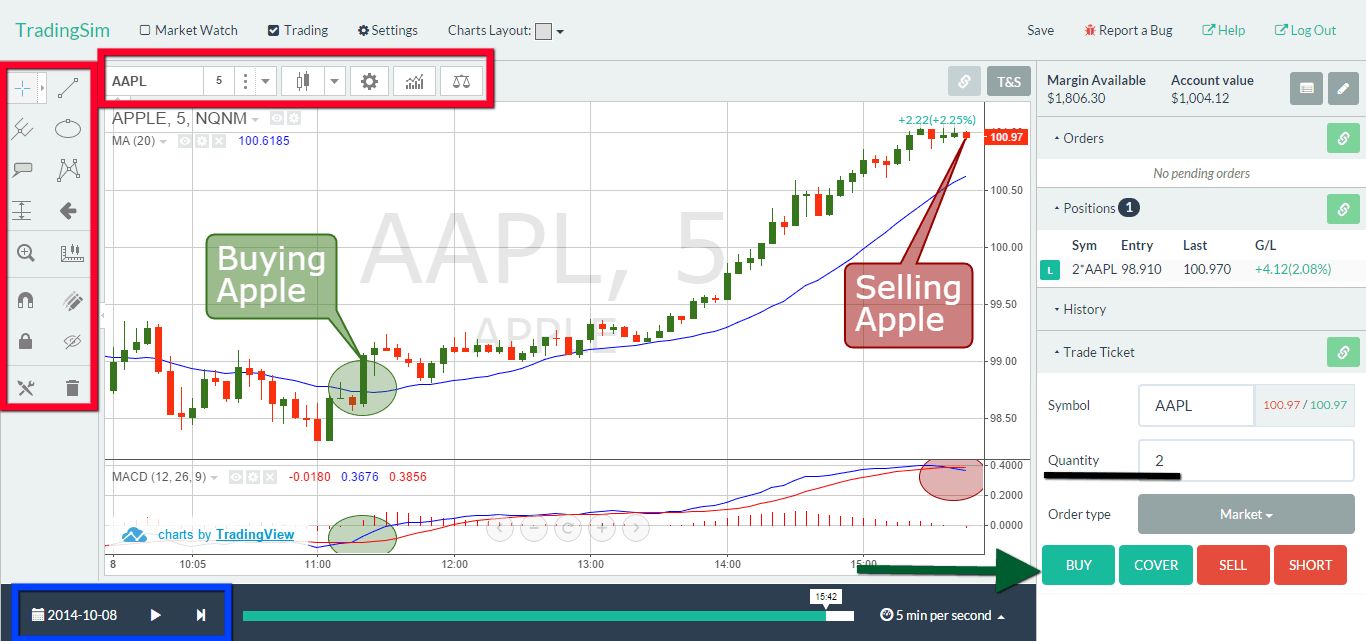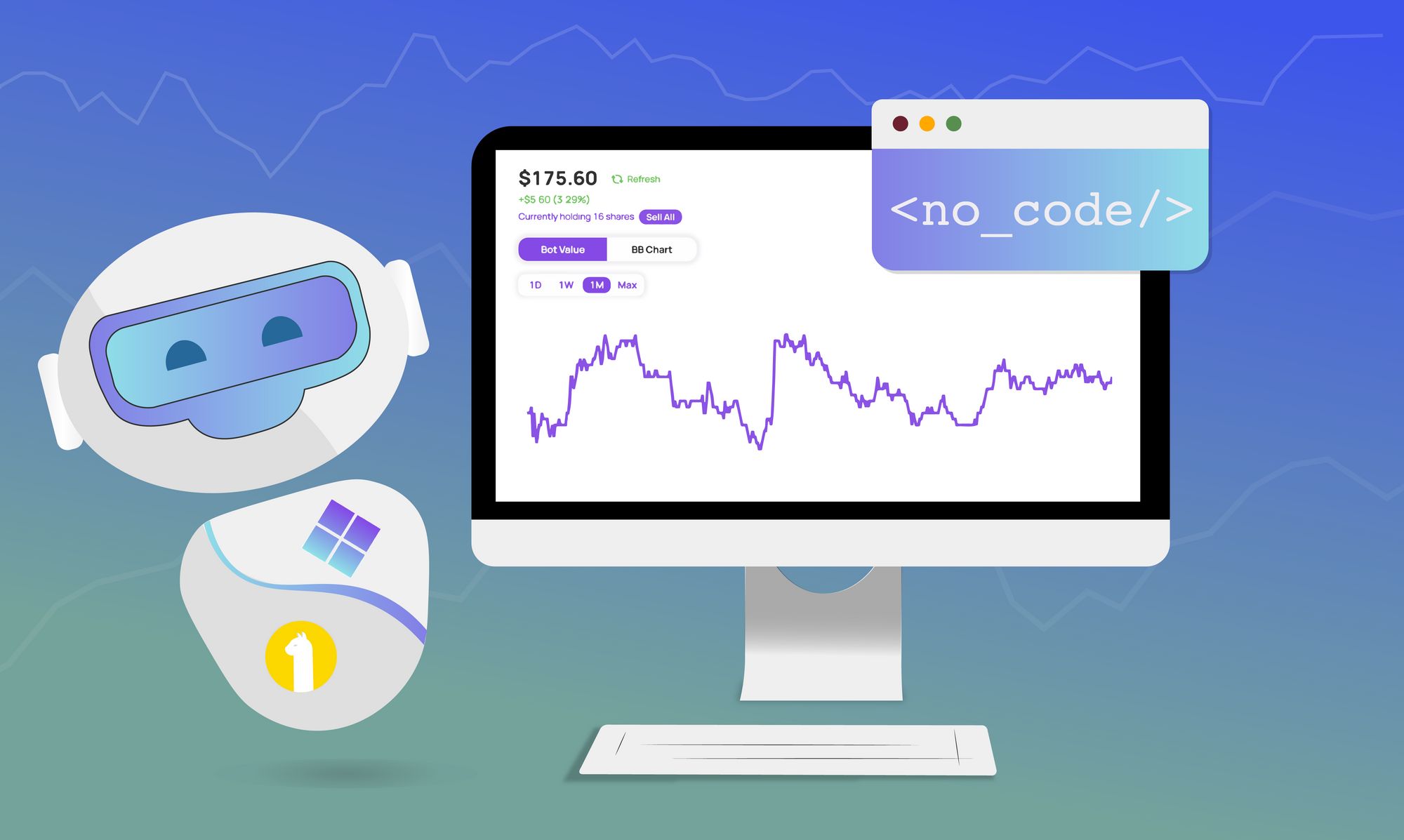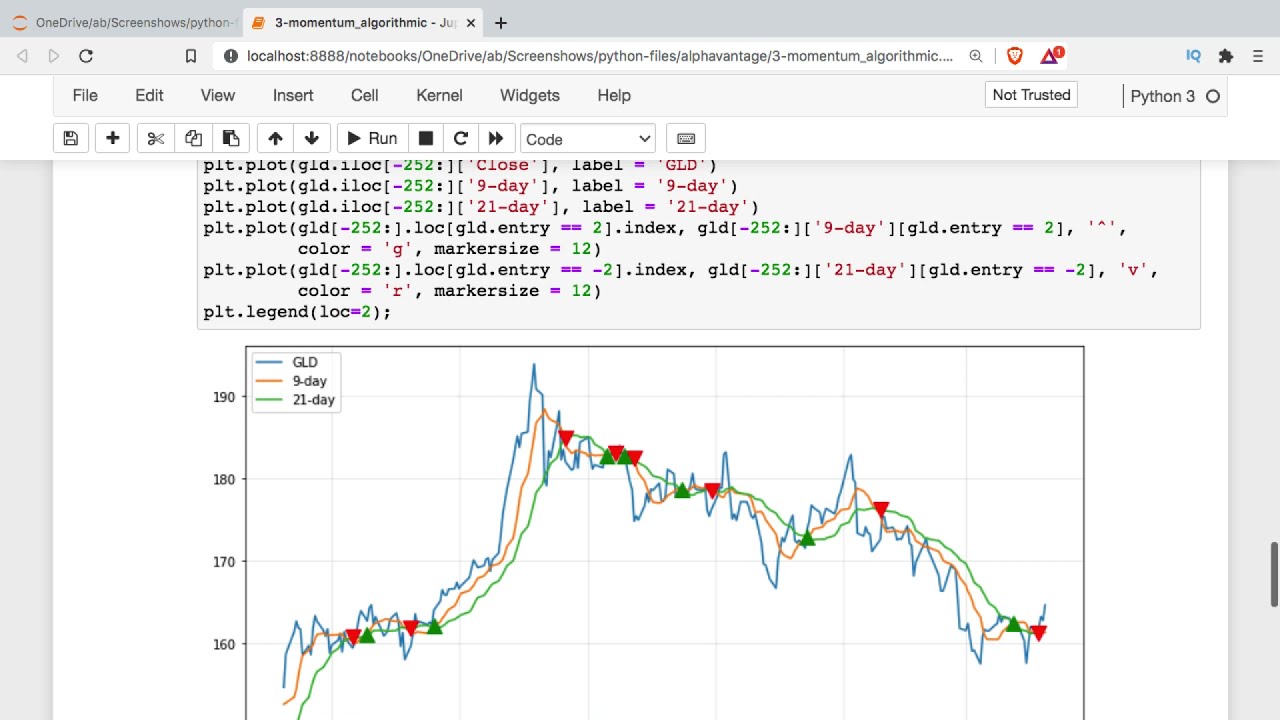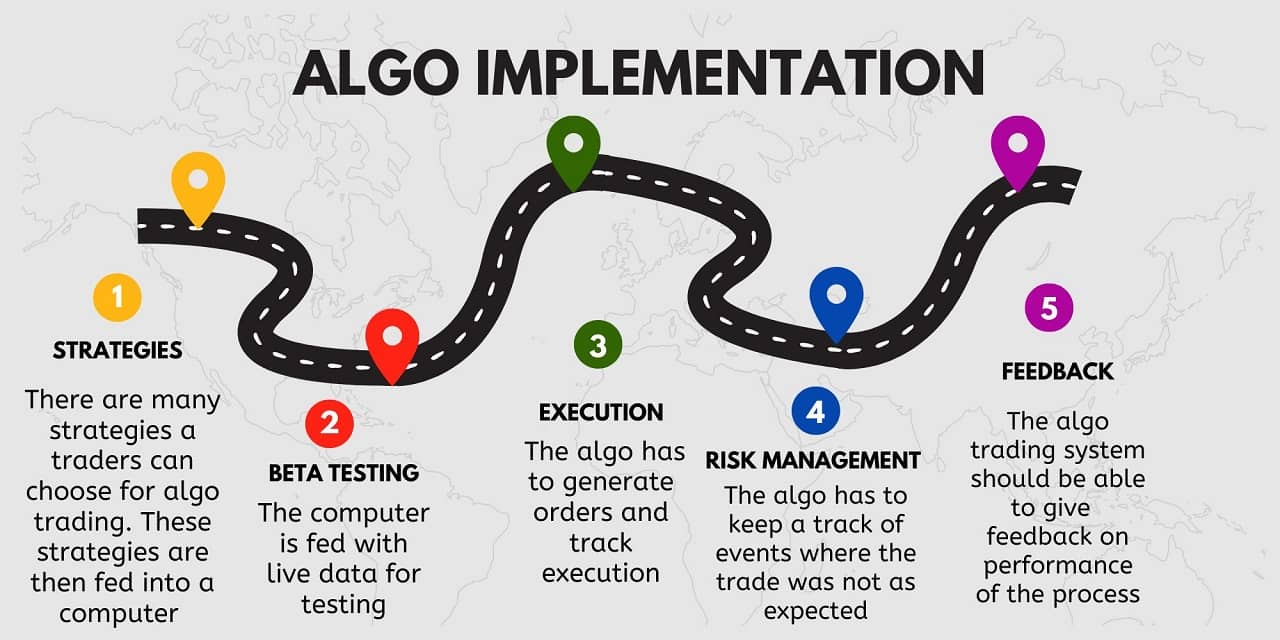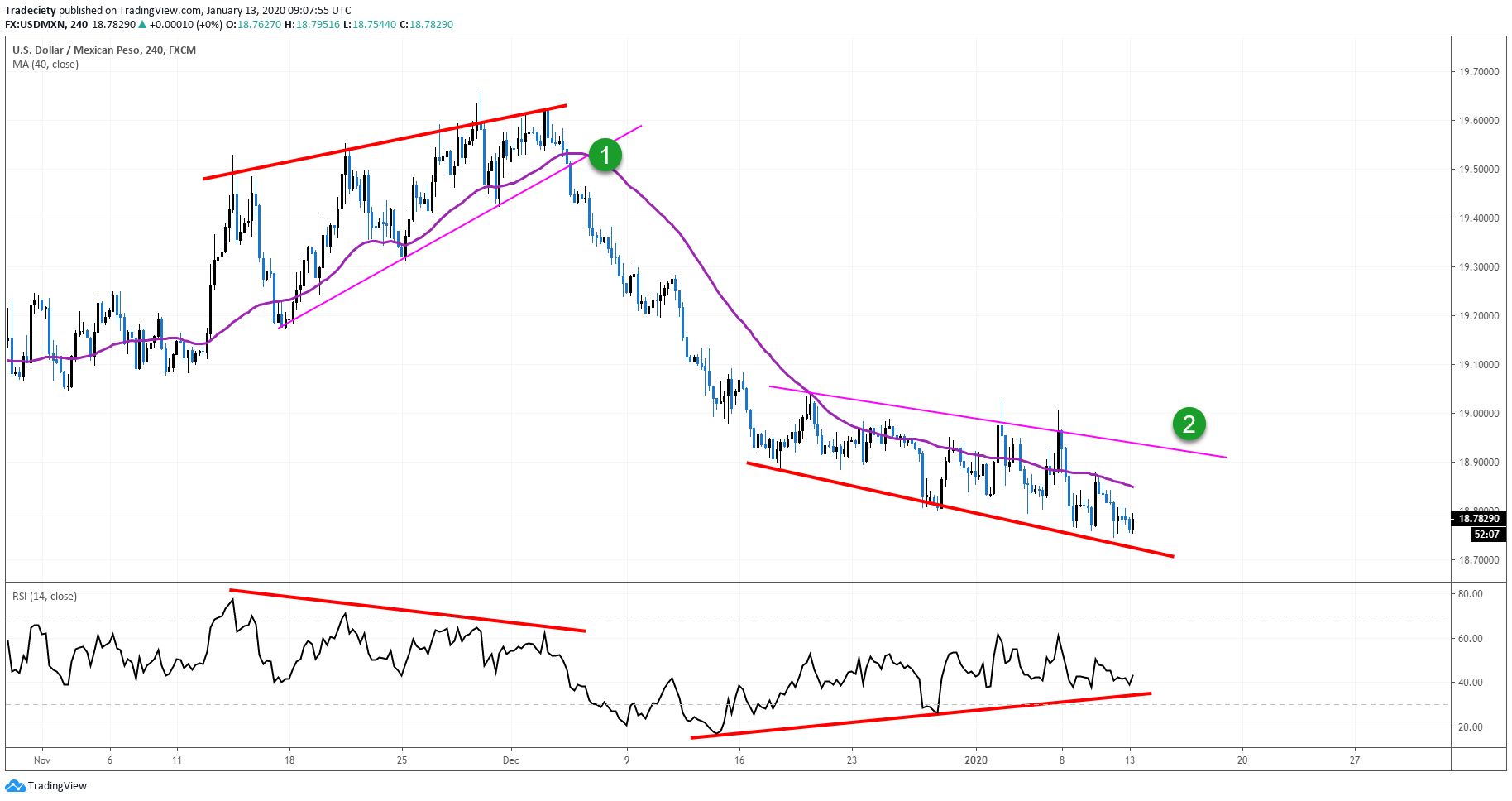Introduction
Welcome to the world of trading strategies! If you’re new to the concept of backtesting, you’re in for an enlightening journey. Backtesting is the process of evaluating a trading strategy based on historical data to assess its profitability and viability. It allows traders to estimate the potential risks and rewards associated with the strategy and make informed decisions.
Developing a successful trading strategy is not merely a matter of luck or intuition. It requires careful analysis, testing, and refinement. Backtesting plays a vital role in this process, as it allows traders to simulate their strategies on historical data to evaluate their performance objectively.
Backtesting can provide valuable insights into how a trading strategy would have performed in the past, giving traders an indication of its potential for success in the future. By simulating trades using historical data, traders can identify patterns, test their assumptions, and refine their strategies without risking real money.
During the backtesting process, traders can analyze key metrics such as profitability, drawdowns, win ratios, and risk-adjusted returns. This information helps traders understand the strengths and weaknesses of their strategies and make necessary adjustments to improve performance.
However, it’s important to note that backtesting is not a crystal ball that can predict future market movements or guarantee success. Market conditions change, and what may have worked well in the past may not perform as expected in the future. Nevertheless, backtesting provides a solid foundation for traders to make data-driven decisions and increase their chances of success in the markets.
In this article, we will explore the process of backtesting a trading strategy in detail. We’ll discuss gathering historical data, exploring different backtesting platforms, setting up your strategy, conducting preliminary tests, analyzing the results, refining your strategy, and avoiding common pitfalls. So, if you’re ready to take your trading to the next level, let’s dive into the fascinating world of backtesting!
What is a trading strategy?
A trading strategy is a set of predefined rules and criteria that traders use to guide their decision-making process when entering, managing, and exiting trades in financial markets. It is a systematic approach that helps traders identify potential opportunities and manage risks effectively.
The foundation of a trading strategy lies in the analysis of various factors, including market conditions, technical indicators, fundamental data, and even trader sentiment. These factors are used to develop a set of rules that determine when to enter a trade, where to set stop-loss and take-profit levels, and when to exit a trade.
Trading strategies can be based on different methodologies, such as trend-following, range trading, breakouts, or mean reversion. Each strategy has its own set of rules and criteria, depending on the trader’s preferences and the market conditions they aim to exploit.
For example, a trend-following strategy aims to identify the direction of a trend and enter trades in line with that trend. It may use technical indicators such as moving averages or trendlines to determine the trend and generate buy or sell signals. On the other hand, a mean reversion strategy seeks to identify overbought or oversold conditions and takes trades against the prevailing trend in anticipation of price reversal.
Trading strategies can be employed across various financial markets, including stocks, currencies, commodities, and cryptocurrencies. They can be applied to different timeframes, ranging from short-term scalping strategies to long-term position trading strategies.
It’s important to note that a trading strategy is not infallible and does not guarantee success. The markets are inherently unpredictable, and there is always a risk of losses. However, a well-designed and thoroughly tested trading strategy can provide traders with an edge, helping them make informed decisions and improve their chances of profitability over the long term.
Having a trading strategy is essential for any trader looking to navigate the volatile world of financial markets. It provides a structured and disciplined approach, reducing the influence of emotions and impulsive decisions. By following a well-defined strategy, traders can minimize risks, optimize their entries and exits, and increase the consistency of their trading results.
The importance of backtesting
Backtesting is a crucial step in the development and evaluation of a trading strategy. It allows traders to assess the performance and profitability of their strategies based on historical data before risking real capital in the live markets.
One of the primary benefits of backtesting is that it provides objective data and insights into how a trading strategy would have performed in the past. By simulating trades and applying the strategy to historical price data, traders can evaluate its effectiveness, profitability, and robustness.
Backtesting helps traders identify potential flaws or weaknesses in their strategies. It allows them to assess the risk-reward ratio, drawdowns, win ratios, and other important metrics to gauge the strategy’s potential for success. By identifying and addressing any shortcomings, traders can refine their strategies and improve their overall performance.
Another advantage of backtesting is that it provides traders with a realistic expectation of what to expect from their strategies. It helps set realistic goals and avoids unrealistic expectations based on subjective opinions or over-optimistic assumptions. Traders can gain confidence in their strategies by verifying their historical performance and aligning their expectations accordingly.
Backtesting also allows traders to optimize their strategies by testing different parameters, variables, or rules. By conducting a series of backtests with different settings, traders can fine-tune their strategies and identify the optimal parameters that generate the best results. This process helps traders make data-driven decisions and maximize the potential profitability of their strategies.
Moreover, backtesting helps traders gain valuable experience and confidence in their strategies without risking real money. It allows them to learn from past trades, understand market dynamics, and adapt their strategies accordingly. By reviewing and analyzing the backtest results, traders can identify patterns, trends, and potential pitfalls to anticipate in live trading conditions.
It is important to note that while backtesting is a valuable tool, it does have limitations. Backtesting relies on historical data, and the past performance of a strategy does not guarantee future success. Market conditions can change, and what may have worked in the past may not work in the present or future. Therefore, it is essential to regularly reassess and adapt trading strategies based on current market conditions.
Overall, backtesting is a vital step in the process of developing and refining a trading strategy. It allows traders to evaluate the historical performance, identify flaws, optimize parameters, set realistic expectations, and gain confidence in their strategies. By harnessing the power of backtesting, traders can make more informed and data-driven decisions, increasing their chances of success in the challenging world of financial markets.
Gathering historical data
Before diving into the backtesting process, it is essential to gather accurate and reliable historical data for the financial instruments you plan to test your trading strategy on. Historical data provides the foundation for simulating trades and assessing the performance of your strategy in different market conditions.
There are multiple sources where you can obtain historical data, depending on the financial markets you are interested in. Some popular sources include financial data providers, online brokers, and specialized data vendors. It’s important to ensure that the data you gather is complete, accurate, and includes all the necessary information for your analysis.
When gathering historical data, you have a few crucial factors to consider:
- Timeframe: Determine the timeframe that best aligns with your trading strategy. You may need tick data (individual price movements) for high-frequency trading strategies or daily, weekly, or monthly data for longer-term strategies.
- Data quality: Ensure that the data you gather is free from errors and adjusted for any corporate actions, such as stock splits or dividends. Inaccurate or incomplete data can significantly impact the validity of your backtest results.
- Market coverage: Consider the range of markets you want to analyze, such as stocks, currencies, commodities, or indices. Make sure the historical data you gather covers all the markets that are relevant to your trading strategy.
- Data format: Ensure that the historical data is available in a format that is compatible with the backtesting platform or software you plan to use. Common formats include CSV (comma-separated values) or platform-specific formats like MetaTrader’s HST or FXT files.
Additionally, it’s worth noting that some trading platforms or backtesting software may provide built-in historical data. However, it’s always a good idea to cross-reference that data with independent sources to ensure its accuracy and reliability.
Once you have gathered the historical data, you can import it into your chosen backtesting platform or software. Ensure that the data is correctly formatted and organized to match the platform’s requirements. This step is crucial as it lays the groundwork for the accuracy and integrity of your backtesting results.
Remember, the quality and completeness of your historical data play a significant role in the reliability of your backtesting results. Take the time to gather accurate and comprehensive data to ensure the validity of your analysis and optimize the effectiveness of your trading strategy.
Exploring different backtesting platforms
When it comes to backtesting a trading strategy, there are various platforms and tools available to traders. Each platform offers its own set of features, functionalities, and compatibility with different markets and trading styles. Exploring different backtesting platforms is essential to find the one that best suits your needs and preferences.
Here are some popular backtesting platforms worth considering:
- MetaTrader: MetaTrader is a widely-used trading platform that offers built-in backtesting capabilities. It allows traders to develop, optimize, and implement trading strategies using the platform’s proprietary programming language, MetaQuotes Language (MQL). MetaTrader provides access to a vast library of historical data as well as the ability to import custom data for backtesting.
- TradeStation: TradeStation is a comprehensive platform that offers powerful backtesting capabilities. It provides a user-friendly interface and a wide range of technical analysis tools. Traders can write custom strategies using EasyLanguage, making it suitable for both novice and experienced traders.
- NinjaTrader: NinjaTrader is a popular platform among active traders. It offers a robust backtesting feature that allows traders to simulate their strategies on historical data. It supports multiple data feeds and provides extensive customization options for strategy development and optimization.
- QuantConnect: QuantConnect is a cloud-based platform that offers a powerful backtesting engine. It supports multiple programming languages, including C#, Python, and F#, allowing traders to develop and test their strategies using their preferred language. QuantConnect also offers access to a large library of historical data from various markets.
These are just a few examples, and there are many other backtesting platforms and software options available. It’s essential to evaluate each platform’s features, ease-of-use, compatibility, and costs to find the one that aligns with your trading goals and strategy requirements.
When exploring different backtesting platforms, consider the following factors:
- Backtesting functionality: Look for platforms that offer comprehensive backtesting capabilities, including customization options, performance metrics, and account for slippage and transaction costs.
- Data availability: Ensure that the platform provides access to the historical data you need for your backtesting. Check if the platform offers built-in data or allows you to import your own data from reliable sources.
- Programming language: Consider the programming language the platform supports for strategy development. Choose a platform with a language that you are comfortable with or willing to learn.
- User interface: Evaluate the user interface and design of the platform. A user-friendly interface can make the backtesting process more efficient and enjoyable.
- Community and support: Look for platforms with active communities or support forums where you can find assistance, share ideas, and learn from other traders.
Exploring different backtesting platforms is crucial to find the one that best suits your needs, preferences, and technical abilities. Take the time to research and test different platforms to ensure that you have the necessary tools and resources to effectively backtest and refine your trading strategy.
Setting up your trading strategy
Before you begin the backtesting process, it’s important to have a well-defined trading strategy in place. Setting up your trading strategy involves outlining the rules, conditions, and parameters that will guide your trading decisions during the backtesting and live trading phases.
Here are the key steps to setting up your trading strategy:
- Define your objectives: Start by clarifying your trading objectives and goals. Are you aiming for consistent profits, capital preservation, or a specific risk-reward ratio? Defining your objectives will help shape your trading strategy and provide a clear focus.
- Select a market and timeframe: Choose the financial market and timeframe that align with your trading style and preferences. Consider factors such as liquidity, volatility, and your availability to monitor and execute trades within the chosen timeframe.
- Choose your entry and exit criteria: Determine the conditions and criteria that will trigger your entry and exit from trades. This may involve technical indicators, price patterns, support and resistance levels, or fundamental analysis.
- Set stop-loss and take-profit levels: Decide on the appropriate levels for placing stop-loss and take-profit orders to manage risk and secure profits. This can be based on percentage levels, support and resistance levels, or other relevant factors.
- Consider risk management: Develop a risk management plan that outlines how much capital you are willing to risk per trade, how to adjust position sizes based on risk, and when to cut losses if a trade is not working as expected.
- Define trade management rules: Outline how you will manage open trades, including trailing stops, scaling in or out of positions, and adjusting stop-loss or take-profit levels based on market conditions.
- Test and refine your strategy: During the backtesting process, you will have the opportunity to test and refine your strategy based on historical data. Pay attention to the performance metrics and adjust any parameters or rules that are not producing satisfactory results.
Setting up your trading strategy requires a clear understanding of your trading objectives, market dynamics, and risk tolerance. It’s important to strike a balance between simplicity and effectiveness. Keep your strategy clear and concise, avoiding overly complex rules that may lead to confusion or hesitation during real-time trading.
Once you have set up your trading strategy, you can proceed to the backtesting phase where you will apply your rules to historical data and evaluate its performance. Remember that the backtesting phase is iterative, and you may need to refine and improve your strategy as you gain more insights from the backtest results.
By setting up a solid trading strategy, you lay the foundation for successful backtesting and live trading. It provides a structured approach and helps you make objective and disciplined trading decisions based on predefined rules and parameters.
Conducting a preliminary backtest
After setting up your trading strategy, it’s time to conduct a preliminary backtest to assess its performance and evaluate its potential profitability. A preliminary backtest allows you to test your strategy on historical data and gain insights into its strengths and weaknesses.
Here are the steps to conduct a preliminary backtest:
- Select a time period: Choose a specific time period to conduct your backtest on. Consider factors such as the market conditions during that period and the length of time necessary to capture sufficient data.
- Set up your backtesting platform: Ensure that your chosen backtesting platform is properly configured with the historical data and the parameters of your strategy, including entry and exit rules, stop-loss and take-profit levels, and position sizing.
- Run the backtest: Start the backtest and let the platform simulate trades based on your strategy rules. Monitor the trades and performance metrics generated by the backtesting process.
- Analyze the results: Evaluate the performance metrics to gain insights into the profitability and effectiveness of your strategy. Key metrics to consider include profitability, win/loss ratio, maximum drawdowns, risk-adjusted returns, and any other relevant measures specific to your trading objectives.
- Identify strengths and weaknesses: Assess the strengths and weaknesses of your strategy based on the backtest results. Identify patterns or market conditions where the strategy performs well, as well as areas for improvement or potential risks.
- Consider risk and reward: Analyze the risk and reward profile of your strategy. Evaluate whether the potential profit justifies the risk taken, and whether the strategy aligns with your risk tolerance and overall trading objectives.
- Refine your strategy: Based on the analysis of the backtest results, make necessary adjustments and refinements to your strategy. This may involve tweaking the entry and exit criteria, adjusting risk management rules, or modifying position sizing based on the performance metrics.
It’s important to note that a preliminary backtest is just the initial step in evaluating your trading strategy. The results obtained from a single backtest should not be taken as definitive proof of the strategy’s profitability or viability. It is recommended to conduct multiple backtests with different parameters and market conditions to have a more comprehensive understanding of the strategy’s performance.
During the preliminary backtest, keep in mind that historical performance does not guarantee future success. Market conditions change, and what may have worked in the past may not perform as expected in the future. Regularly review and refine your strategy based on current market conditions and feedback from ongoing backtesting and live trading experiences.
By conducting a preliminary backtest, you gain valuable insights into the performance of your trading strategy and can make informed decisions about refining and optimizing it for better results. It is a critical step in the iterative process of developing and improving your strategy before applying it in live trading conditions.
Analyzing the results
Once you have conducted a backtest of your trading strategy, the next step is to analyze the results to gain a deeper understanding of its performance and identify areas for improvement. Proper analysis of the backtest results is crucial in refining your strategy and enhancing your trading approach.
Here are some key aspects to consider when analyzing the backtest results:
- Profitability: Evaluate the overall profitability of the strategy. Look at the net profit and the risk-adjusted returns (such as the Sharpe ratio) to determine whether the strategy generates consistent profits compared to the risk taken.
- Win/loss ratio: Assess the ratio of winning trades to losing trades. A higher win/loss ratio indicates a higher probability of success, but it’s important to consider other metrics such as average win size and average loss size to assess risk-reward dynamics.
- Maximum drawdown: Examine the peak-to-trough decline experienced by the strategy during the backtesting period. A large drawdown may indicate greater risk exposure and potential challenges in handling adverse market conditions.
- Trade frequency: Determine the number of trades executed by the strategy during the backtest. Analyze trade frequency to understand the level of activity and whether it aligns with your trading style and preferences.
- Winning vs. losing trades: Study the performance of individual winning and losing trades. Identify any patterns, such as specific market conditions or trade setups that consistently lead to successful trades or losses. This analysis can provide insights for fine-tuning entry and exit criteria.
- Market conditions: Consider how the strategy performed across different market conditions, such as trending or range-bound markets. Determine if the strategy has a bias towards certain types of market environments and assess its adaptability to changing conditions.
- Risk management: Evaluate how effectively the strategy manages risk. Assess metrics such as the percentage of capital risked per trade, position sizing techniques, and stop-loss levels to ensure that they align with your risk tolerance and preserve capital.
- Statistical significance: Determine the statistical significance of the results. Consider using statistical tests or Monte Carlo simulations to assess the robustness of the strategy and the likelihood of the observed performance being due to chance.
It’s important to remember that backtesting provides insights based on historical data, and the future performance of the strategy may differ. However, a thorough analysis of the backtest results allows you to identify the strategy’s strengths, weaknesses, and areas for optimization.
Based on the analysis, consider making adjustments to your strategy. This may involve refining entry and exit criteria, adjusting risk management rules, exploring different timeframes or markets, or introducing additional filters or indicators to enhance performance.
Continually monitor and reassess your strategy as market conditions change and gather new data. Regularly repeating the analysis and refinement process can help improve the reliability and profitability of your trading strategy over time.
By diligently analyzing the backtest results, you gain valuable insights into the performance and viability of your trading strategy. This analysis serves as a foundation for making informed decisions, refining your approach, and increasing your chances of success in the live markets.
Tweaking and refining your strategy
After analyzing the results of your backtest, it’s time to embark on the journey of tweaking and refining your trading strategy. This iterative process involves making adjustments based on the insights gained from the backtest analysis in order to improve the performance and profitability of your strategy.
Here are key steps to help you refine your strategy:
- Focus on weaknesses: Identify the weaknesses or areas of underperformance highlighted during the backtest analysis. These may include specific market conditions in which the strategy struggles, high drawdowns, frequent losing trades, or inconsistent profitability. By pinpointing these weaknesses, you can devise targeted improvements.
- Adjust entry and exit criteria: Review your strategy’s entry and exit criteria that were employed during the backtest. Consider modifying these criteria to align with the patterns or market conditions identified as drivers of success. This may involve refining technical indicators, adjusting risk-reward ratios, or incorporating additional filters.
- Fine-tune risk management: Assess the risk management aspects of your strategy, including position sizing, stop-loss levels, and trailing stops. Implement adjustments to better manage risk and preserve capital. This may involve reducing position sizes during volatile market conditions or tightening stop-loss levels to minimize losses.
- Experiment with different timeframes and markets: Explore how your strategy performs on different timeframes or in various markets. This can provide valuable insights into whether your strategy is adaptable and effective in different trading environments. It may be worthwhile to run additional backtests on different asset classes or timeframes to assess the strategy’s versatility.
- Consider trade management: Analyze the management of open trades as part of your strategy. Evaluate whether strategies such as trailing stops, scaling in/out, or profit targets can be implemented to improve trade outcomes. Effective trade management can help maximize profits and reduce potential losses.
- Maintain discipline and consistency: Stick to the refined rules of your strategy and avoid emotional decision-making during the live trading process. Maintaining discipline and consistency in following the rules, even during challenging market conditions, is key to success.
- Continually backtest and evaluate: As you implement refinements, it is essential to conduct further backtests to verify the impact of the changes. Regularly evaluate the performance of your refined strategy using new data and adjust as needed to ensure ongoing optimization.
The process of tweaking and refining your strategy is not a one-time event but rather an ongoing journey. It requires patience, perseverance, and a willingness to adapt in response to market dynamics and new insights gained from your trading experiences.
While refining your strategy, remember that no strategy guarantees success. The market is complex and unpredictable, and some level of risk will always be involved. However, through diligent refinement and optimization, you can increase the probability of success and improve the long-term performance of your trading strategy.
Ultimately, the goal of tweaking and refining your strategy is to create a robust and adaptable framework that aligns with your trading objectives. By continuously seeking to improve your strategy, you increase your potential for consistent profitability and long-term success in the challenging world of trading.
Performing additional backtests with different parameters
Once you have refined your trading strategy based on the initial backtest results, it’s essential to perform additional backtests with different parameters. Testing your strategy with various parameters allows you to explore alternative setups and optimize its performance further.
Here are the key steps to performing additional backtests with different parameters:
- Select varying parameter values: Identify the parameters within your strategy that can be adjusted to explore alternative setups. This could include technical indicator periods, stop-loss and take-profit levels, or position sizing methods. Choose a range of parameter values that cover different possibilities.
- Define the testing criteria: Determine the criteria for evaluating the performance of each set of backtest results. Focus on essential metrics such as profitability, drawdowns, win/loss ratios, and risk-adjusted returns. By establishing specific testing criteria, you can objectively compare and assess the outcomes.
- Run the additional backtests: Use your backtesting platform to run the series of backtests by applying different parameter values to the strategy. This will generate multiple sets of results that can be compared and analyzed.
- Analyze and compare the results: Analyze the outcomes of each backtest and compare them against the established testing criteria. Evaluate the performance metrics for each set of parameters to determine which values yield the best results. This analysis will help you identify the most optimal parameter values for your strategy.
- Iterate and refine: Based on the analysis of the additional backtests, refine your strategy further by selecting the parameter values that produce the most favorable results. Consider a combination of parameters from different backtests to enhance the overall performance and consistency of your strategy.
- Consider robustness and stability: Assess the robustness and stability of the strategy by analyzing the consistency of results across different parameter sets. Look for parameter values that consistently produce positive results under various market conditions. A strategy with robust and stable performance is more likely to withstand changes in the market environment.
- Document and track outcomes: Record the results of each backtest, along with the specific parameter values used. Maintain a record of the testing criteria, performance metrics, and observations from the analysis. This documentation will serve as a reference for future optimizations and as a way to track the evolution of your trading strategy.
Performing additional backtests with different parameters enables you to fine-tune your strategy and discover parameter values that align best with your trading objectives and market conditions. It allows you to explore the potential of your strategy in depth and optimize its performance for increased profitability.
Remember that backtesting provides insights based on historical data, and while it can help guide decision-making, future performance is not guaranteed. Continually re-evaluate and refine your strategy as market conditions evolve, and consider retesting with new data periodically to ensure its ongoing effectiveness.
By performing additional backtests with different parameters, you gain a deeper understanding of your strategy’s performance under various scenarios. Utilize the insights gained from these tests to enhance the robustness, reliability, and profitability of your trading strategy.
Interpreting and comparing the results
Interpreting and comparing the results of your backtests is a critical step in understanding the performance of your trading strategy. This analysis helps you make informed decisions about the effectiveness of your strategy and identify areas for further improvement. By comparing different sets of backtest results, you can gain valuable insights into the strengths and weaknesses of your strategy under various conditions.
Here are key considerations for interpreting and comparing the results:
- Profitability: Evaluate the overall profitability of each set of backtest results. Compare the net profit, average profit per trade, and other relevant metrics to determine which parameter values or setups yield the best returns.
- Drawdowns and risk management: Analyze the maximum drawdowns and risk management metrics across different backtests. Assess how well each set of parameter values manages risk in terms of preserving capital during unfavorable market conditions.
- Consistency: Consider the consistency of results across the different backtest sets. Look for parameter values that consistently produce positive returns and exhibit stable performance. A strategy with consistent performance is often more reliable and robust.
- Market conditions: Pay attention to how each set of parameter values performs in different market conditions. Identify if there are specific scenarios or market environments in which the strategy excels or struggles. This analysis helps you understand the strategy’s adaptability and suitability for various market conditions.
- Risk-reward ratio: Compare the risk-reward ratios across different backtests. Assess if certain parameter values offer a better balance between risk and reward, providing a higher potential for profits relative to the risks taken.
- Win/loss ratios: Evaluate the win/loss ratios of each backtest set. Look for parameter values that yield higher win ratios while still maintaining a favorable risk-reward profile. A higher win ratio can contribute to improved overall profitability.
- Robustness and stability: Assess the robustness and stability of the strategy by comparing the performance metrics across different backtests. Identify parameter values that consistently generate positive results and minimize performance variations.
- Consider the big picture: Compare the outcomes of each backtest holistically, considering all relevant metrics and factors. Avoid focusing solely on one metric or parameter value but instead aim for a comprehensive view of the performance and viability of the strategy.
Through the process of interpreting and comparing the results, you can identify the parameter values or setups that offer the most favorable performance. This analysis assists in making informed decisions about the optimal configuration of your strategy and provides insights for potential enhancements.
Keep in mind that the interpretation of backtest results should be done cautiously, considering the limitations of historical data and the dynamic nature of the markets. Regularly reassess and update your strategy as market conditions change, and continue to evaluate and compare performance as new data becomes available.
By carefully interpreting and comparing the results of your backtests, you gain valuable insights into the strengths and weaknesses of your trading strategy. This analysis enables you to make data-driven decisions, refine your approach, and increase the probability of success in live trading environments.
Pitfalls to avoid during the backtesting process
Backtesting is a valuable tool for assessing the performance of a trading strategy, but it’s essential to be aware of potential pitfalls that can undermine the accuracy and effectiveness of the process. By avoiding these pitfalls, you can ensure that your backtesting results provide reliable insights and improve your decision-making in live trading. Here are some common pitfalls to avoid during the backtesting process:
- Data snooping bias: Make sure not to fall into the trap of data snooping bias, where you unintentionally overfit your strategy to historical data. Be cautious not to excessively optimize parameter values or rules based on specific historical periods, as it may lead to false indicators of future profitability.
- Ignoring transaction costs: Neglecting to account for transaction costs, such as spreads, commissions, and slippage, can significantly impact the performance of your strategy. Consider these costs realistically in your backtests to ensure your results reflect the true profitability of your strategy.
- Overlooking liquidity constraints: Failing to consider the liquidity constraints of the markets you are backtesting can introduce unrealistic assumptions. Liquidity can impact trade execution, especially in higher volume strategies. Incorporate realistic order execution delays or partial fills in your backtests to account for these constraints.
- Ignoring market impact: Market impact refers to how your trades may affect the market itself, leading to adverse price movements. Assess the potential impact of your strategy on the market and include this consideration in your backtesting process, particularly if you are trading with larger positions or in less liquid markets.
- Underestimating slippage: Slippage occurs when the actual execution price of your trades differs from the expected price. Take into account realistic slippage estimates in your backtest to better reflect the impact of order execution on your strategy’s performance.
- Ignoring survivorship bias: Be wary of survivorship bias, which occurs when only successful or currently active instruments are included in your backtest data. Ensure that your historical data covers the full universe of instruments you intend to trade and account for delisted or inactive instruments to avoid bias.
- Neglecting robustness testing: Relying solely on the performance of your strategy on a single set of backtest results can be misleading. Conduct robustness testing by varying parameters, testing different time periods, or using out-of-sample data to confirm the general validity and stability of your strategy.
- Over-optimization: Strive to strike a balance between optimizing your strategy for improved performance and avoiding over-optimization. Excessive optimization can result in a strategy that is overly tailored to historical data but may fail to perform well in real-time trading due to changes in market conditions.
Avoiding these pitfalls requires careful consideration and a disciplined approach to backtesting. Always remain aware of the potential biases and limitations of the process, and continuously strive to refine and improve your strategy based on realistic and robust testing.
By avoiding these pitfalls, you can ensure that your backtesting process is accurate, relevant, and provides meaningful insights into the performance and viability of your trading strategy. This will ultimately contribute to better decision-making and improved results in your live trading endeavors.
Conclusion
Backtesting is a crucial step in the development and evaluation of a trading strategy. It allows traders to assess the performance, profitability, and viability of their strategies based on historical data. By simulating trades and analyzing the results, traders can gain valuable insights into the strengths, weaknesses, and areas for improvement in their strategies.
Gathering accurate and reliable historical data is the first step in the backtesting process. Traders should ensure that the data covers the required markets, timeframes, and quality standards necessary for an accurate analysis.
Exploring different backtesting platforms is essential to find the one that aligns with your needs and preferences. Platforms such as MetaTrader, TradeStation, NinjaTrader, or QuantConnect offer various functionalities and customization options to suit different trading styles.
Setting up a trading strategy involves defining objectives, selecting the market and timeframe, and establishing entry and exit criteria, risk management rules, and trade management strategies. These parameters should align with your trading goals and risk tolerance.
Once the strategy is set up, conducting a preliminary backtest allows traders to evaluate its performance on historical data. Analyzing the results helps identify strengths, weaknesses, and areas for refinement.
Tweaking and refining the strategy based on backtest analysis is crucial for improving performance. It involves making adjustments to entry and exit criteria, risk management rules, and other parameters to enhance profitability and consistency.
Performing additional backtests with different parameters helps fine-tune the strategy. By testing various parameter values, traders can identify the optimal setup and understand the strategy’s performance under different scenarios and market conditions.
Interpreting and comparing the backtest results provide insights into the strategy’s profitability, risk management, consistency, and adaptability. This analysis helps traders make informed decisions and improve their strategies.
Throughout the backtesting process, it is important to avoid pitfalls such as data snooping bias, ignoring transaction costs and liquidity constraints, and over-optimization. By being mindful of these pitfalls, traders can ensure the accuracy and relevance of their backtest results.
In conclusion, backtesting is an essential tool for traders to evaluate and refine their trading strategies. It provides valuable insights into a strategy’s performance and helps traders make data-driven decisions for improved results in live trading. By following a systematic and disciplined approach to backtesting, traders can increase their chances of success and navigate the challenging world of financial markets with confidence.







